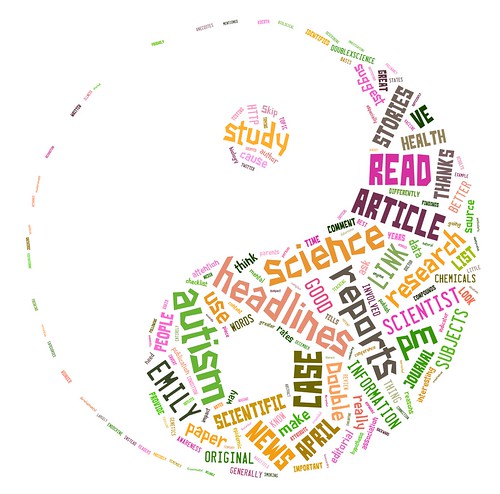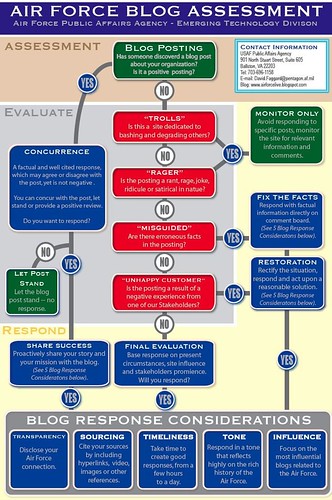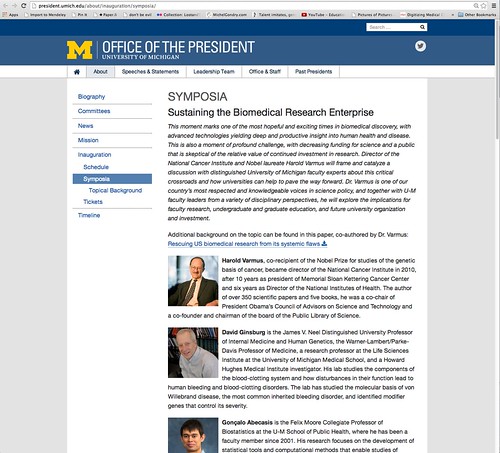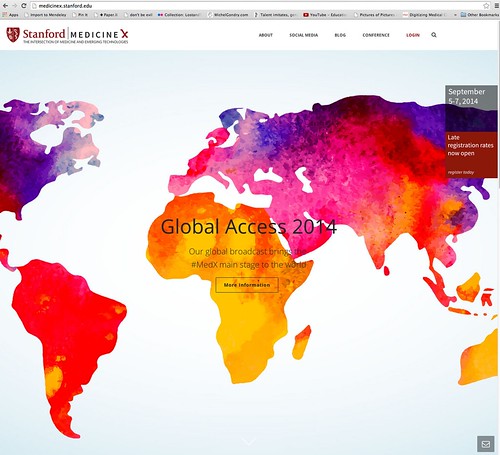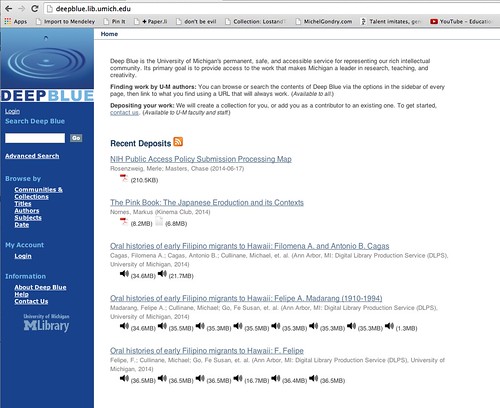Last week I spent some time in conversations that began with Andrew Maynard’s posting a question to Twitter: “When is it OK to post a figure from a paper in a blog post?”
There were a lot of interesting thoughts and responses (before the conversation detoured off into mac’n’cheese and samurai swords). Things along the lines of, “What!? You mean research figures are different from pictures?” and “Isn’t it OK if you give a citation?” and “Well, my journal won’t allow it, but maybe some others do.” And what did the answer turn out to be? “It depends.” Isn’t that the truth – intellectual property issues always seems to depend on a variety of factors and situations. But answers to the various responses and questions were also sometimes not what was expected.
Does giving a citation to the source make it ok to share? Turns out it is irrelevant, in the sense of what is required legally, although it is expected as part of being active in scholarly culture as a matter of courtesy.
https://twitter.com/CopyrightLibn/status/551746994608549888
Now, more about posting research figures in blogs. I found quite a lot of information online to help explain part of how this works (or doesn’t). I’ll include small quotations that I found particularly helpful in understanding this better. Please not, IANAL (“I Am Not A Lawyer”!), so hopefully someone with more legal experience will contribute thoughts in the comments or will reply in another post.
“REUSE OF FIGURES, IMAGES, AND OTHER CONTENT”
The absolutely most helpful piece I found was from MIT Libraries.
MIT Libraries, Scholarly Publishing: Reuse of figures, images, and other content in theses http://libraries.mit.edu/scholarly/publishing/copyright-publishing-guide-for-students/reuse-of-figures-images-and-other-content-in-theses/
Please note, this is describing rights to re-use content in THESES, not blogposts, so it might be a little different. The MIT resource emphasized two main points (copyright, and fair use), with a pointed twist (oops, figures ARE different!).
Point 1: Is it copyrighted?
You see, if it isn’t copyrighted, if an image is in the public domain, you don’t have a problem — it is content you can use. That is more likely to apply to items that are quite old, or created by government employees in the performance of their job. But copyright gets complicated. What if the journal is from Australia instead of the United States? Whether or not a piece is copyrighted may change based on the country in which it was created.
Even if it is copyrighted, if it is licensed for open use, you are fine. Probably. OK, I’m going to show an image here that ought to be OK, and hope it really is. This stuff is tricky. If someone complains, I’ll blur out whatever part they are concerned about.
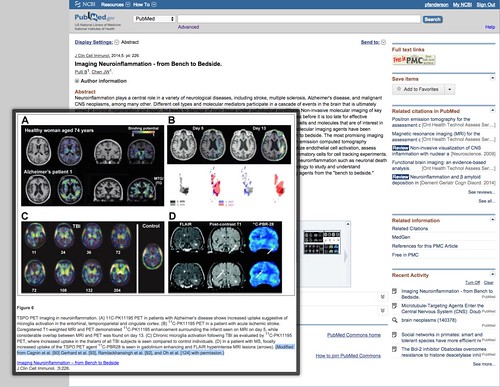 PubMed screenshot of:
PubMed screenshot of:
Benjamin Pulli and John W Chen. Imaging Neuroinflammation – from Bench to Bedside. J Clin Cell Immunol. Author manuscript; available in PMC Dec 16, 2014. Published in final edited form as: J Clin Cell Immunol. 2014; 5: 226. http://www.ncbi.nlm.nih.gov/pubmed/25525560
This is a screenshot from PubMed. PubMed is an open database developed and created by the US government. I had talked with our lawyers about using screenshots from databases in teaching and blogging about database interfaces. I was told (off the record) that it was probably OK to use the screenshots without asking for permissions as part of fair use. The idea was that even if the database legally has copyright protection for their user interface design (as they most assuredly do), that I am teaching and blogging about it is unlikely to impact on their sales negatively, which is one of the markers of “Fair Use” assessment. Chances are, if anything, my teaching and blogging about their database would serve as free advertising, increasing awareness and profits rather than reducing them. That assumes, of course, that I am saying good things about them. So, maybe it would be a different matter and not fair use if I was criticizing the database?
PubMed does this nifty thing where you can find images of research figures in the citations, if the original source is an article in PubMed Central, an extension of PubMed’s database that includes open access articles deposited by the publishers. (More info here about how they are different.) For the images displayed as thumbnails in PubMed, if you mouse over them, they get big and beautiful. This is what I’m showing in this screenshot.
This screenshot is of a citation record for an article that is open access and published in PubMed Central. Does the copyright permissions for screenshots in PubMed extend to the content? That this article is open access would mean that the article is copyrighted, but open for people who want to read it, and also available to re-use under specific guidelines. The guidelines given for the article are, “This is an open-access article distributed under the terms of the Creative Commons Attribution License, which permits unrestricted use, distribution, and reproduction in any medium, provided the original author and source are credited.” By the rules, I need to include a full citation with the image. I have done so, both in Flickr, where I put the screenshot, and here in the blogpost. BUT.
BUT. But what? But this figure from the open access research article says that a portion of the image was modified from another source, WITH PERMISSION. Does that permission extend to me, since it was in an open access journal? I’m not sure. I’m not sure if I need to get two sets of permission to use this image, or none. Do I need to go back to the original authors of that portion and request permission myself? Do I need to blur out that portion of the image? Or did the process of these authors getting permission to use in an open access journal publication cover subsequent re-use? Do I need to check the policies for the journal where the source image was published? It’s … complicated.
For me, today, I’m electing to go ahead and use the image, trusting and hoping that the permissions cover this use. If someone complains, I will go back and blur out that portion of the image, and then replace it.
Many publishers have processes by which they establish policies that guide whether or not they give permission easily or if you have to jump through hoops or purchase permission. If you want to find out what the policies are for a journal with a figure you’d like to use, the place to check is SHERPA. If you want to know if a journal is open access, the you may want to check the DOAJ (Directory of Open Access Journals).
SHERPA/RoMEO – Publisher copyright policies & self-archiving http://www.sherpa.ac.uk/romeo/
DOAJ: http://doaj.org/
Part Two will look more deeply at the idea of Fair Use in using research figures. That’s where it gets really interesting, so stay tuned! For now, I hope you have a better sense of the two-pronged sword of copyright in using research figures:
– Yes, it’s OK to use research figures that are copyright-free, public domain, or open access;
– BUT, sometimes those categories are less than straightforward.


